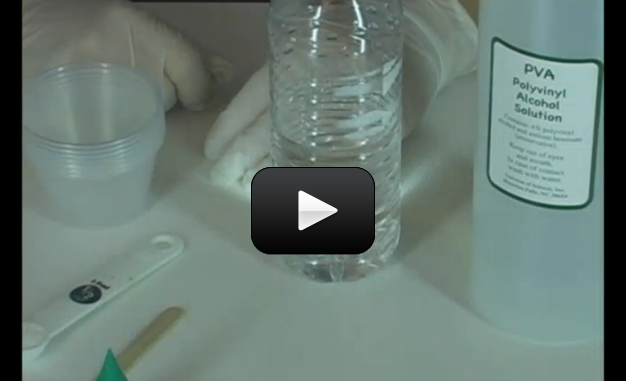Instead of using glue as a polymer (as in the slime recipes above), we're going to use PVA (polyvinyl alcohol). Most liquids are unconnected molecules bouncing around. Monomers (single molecules) flow very easily and don't clump together. When you link up monomers into longer segments, you form polymers (long chains of molecules).
Polymers don't flow very easily at all - they tend to get tangled up until you add the cross-linking agent, which buddies up the different segments of the molecule chains together into a climbing-rope design.
[am4show have='p8;p9;p11;p38;p92;p79;p80;p101;' guest_error='Guest error message' user_error='User error message' ]
Materials:
Download Student Worksheet & Exercises
By adding borax to the mix, you cross-link the long chains of molecules together into a fishnet, and the result is a gel we call slime. PVA is used make sponges, hoses, printing inks, and plastic bags.
You can add food coloring (or a bit of liquid Ivory dish soap to get a marbled appearance). You can also add a dollop of titanium dioxide sunscreen to your slime before cross-linking it to get a metallic sheen.
[/am4show]
- PVA (polyvinyl alcohol)
- Borax (sodium tetraborate)
- Disposable cups
- Popsicle sticks


PVA and Borax can be very irritating to your eyes. It is best not to touch this slime. But if you do, be sure to wash your hands with soap and water after you finish your experiment.
Hi.Its Maudie and I would like to now if you can touch the PVA SLIME. I noticed you only used a
popsicle stick. You’re a GREAT teacher.
Love,Maudie